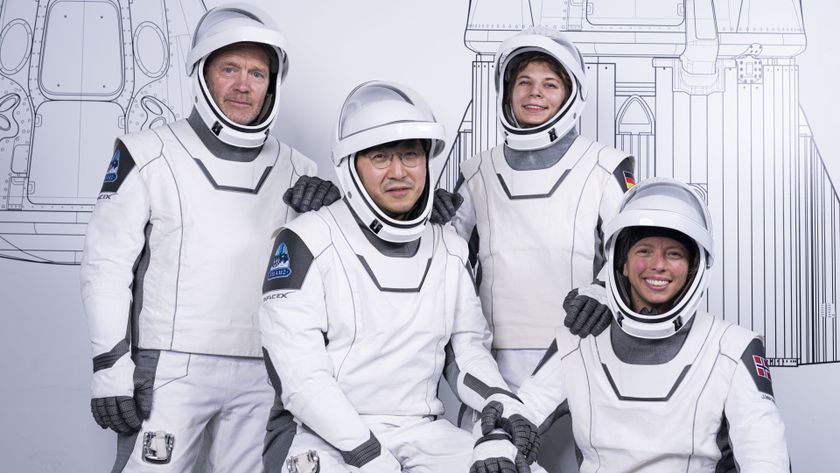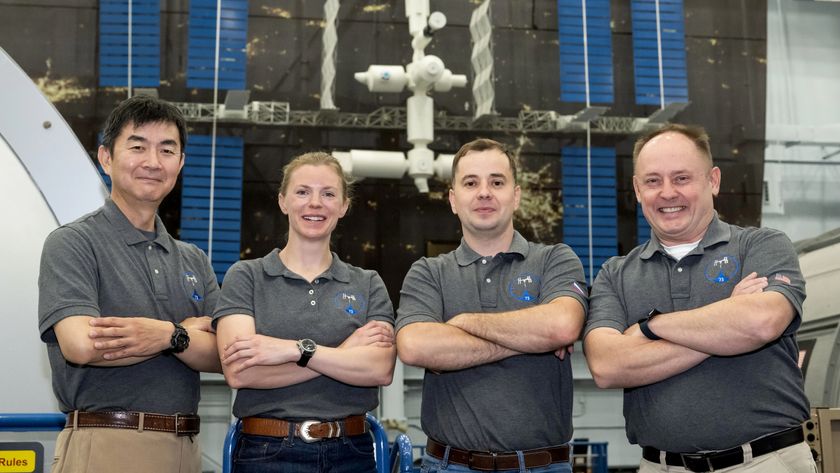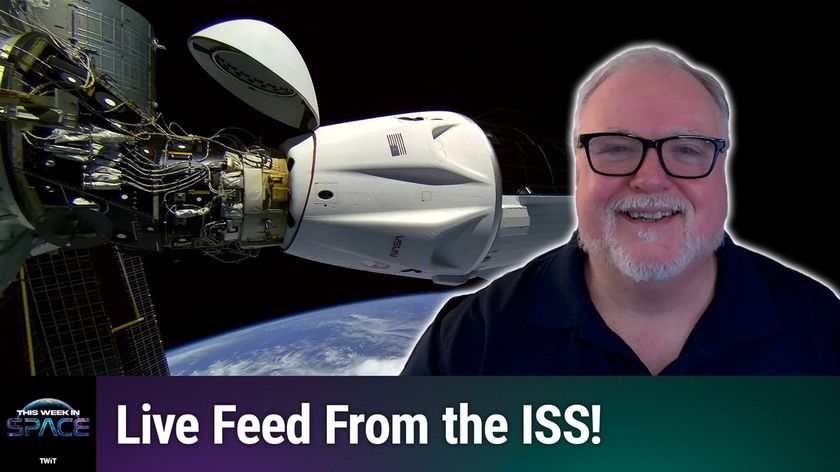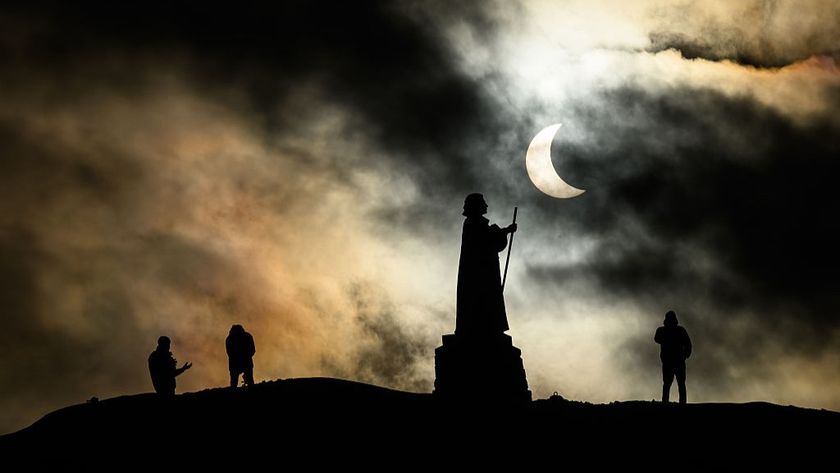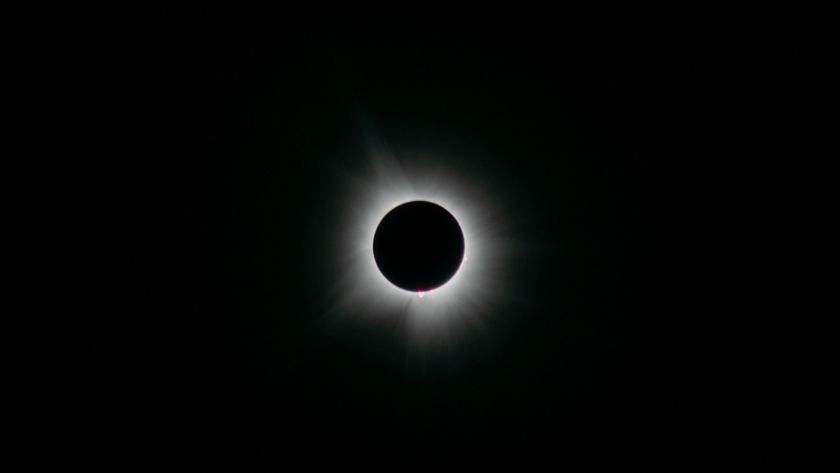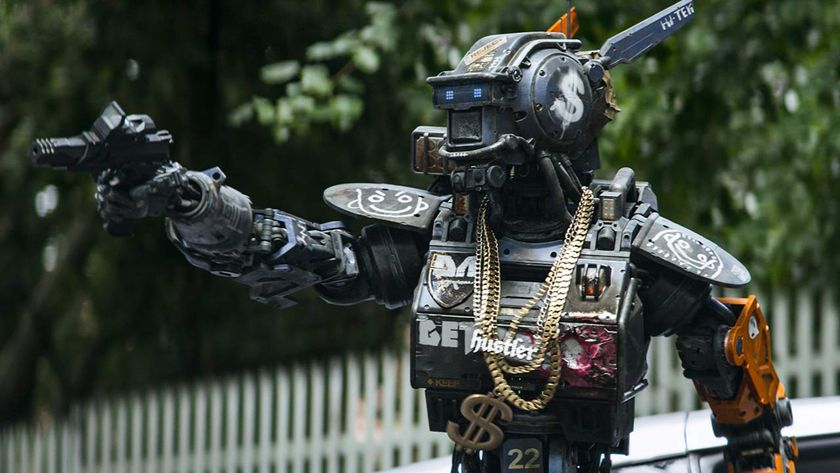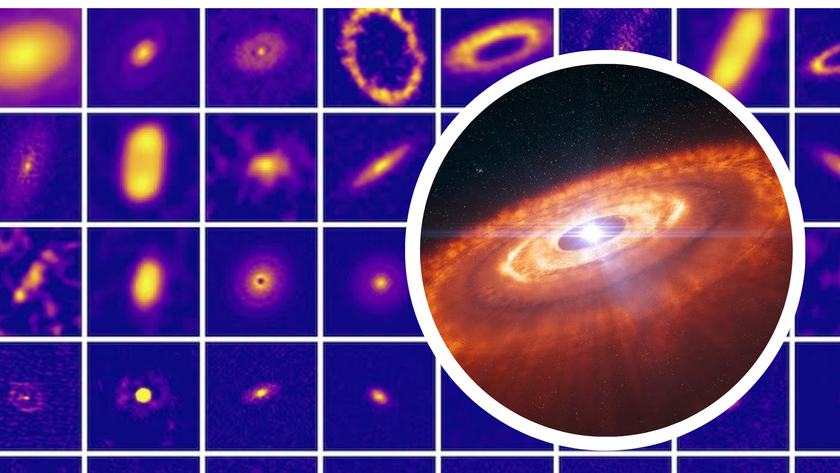NASA Jumbo Jet Arrives in Fla. for Final Space Shuttle Ferry Flight
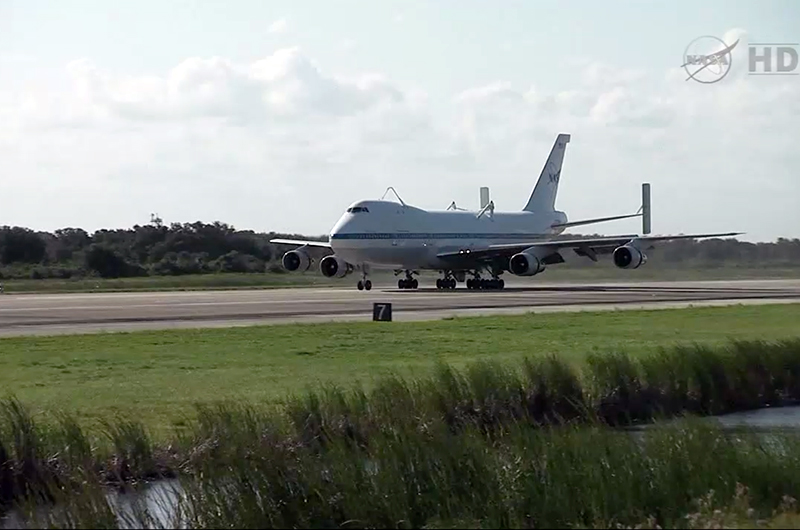
A NASA jumbo jet used to ferry space shuttles around the country has arrived in Florida, where for the last time it'll be paired with one of the winged spacecraft for a transcontinental trip.
On Tuesday (Sept. 11), the modified Boeing 747 Shuttle Carrier Aircraft landed at Kennedy Space Center in Cape Canaveral after flying in from NASA's Dryden Flight Research Center in southern California. The jetliner will be used to carry space shuttle Endeavour to Los Angeles for its display at the California Science Center (CSC).
The SCA touched down at 5:05 p.m. EDT (2105 GMT) at Kennedy's Shuttle Landing Facility, on the same runway where Endeavour returned from space after its 25th and final spaceflight on June 1, 2011.
On Monday (Sept. 17), the orbiter, mounted atop the SCA, will take off from the 15,000-foot (4,572-meter) concrete strip on a three-day trip to Los Angeles International Airport (LAX).[How NASA Flies Shuttles on 747 Jets (Photos)]
From there, Endeavour will leave in October on a two-day, 12-mile parade through the streets of Inglewood and L.A., ultimately arriving in the CSC's new Samuel Oschin Space Shuttle Endeavour Display Pavilion on Oct. 13. The retired shuttle's exhibit will open to the public on Oct. 30.
Ferry flight plan
Before all that can happen though, Endeavour first needs to be mounted atop the carrier aircraft for its ferry flight to the West Coast.
Get the Space.com Newsletter
Breaking space news, the latest updates on rocket launches, skywatching events and more!
That process will begin before dawn on Friday (Sept. 14), as the shuttle is rolled out to the runway to a gantry-like structure called the Mate-Demate Device (MDD). There, it will be attached to a sling and hoisted by crane into the air. The SCA will then taxi in underneath the shuttle, so Endeavour can be lowered down onto its back.
After bolts are secured, the SCA-shuttle combo will back out of the MDD, which is scheduled for sunrise on Sunday (Sept. 16). Weather permitting, the pair will take off around daybreak (7 a.m. EDT or 1100 GMT) the next day.
Before departing Florida for its final time, Endeavour, atop the SCA, will circle the Space Coast, flying over Kennedy Space Center, its visitor complex, the Cape Canaveral Air Force Station and the surrounding beaches.
On their way to Los Angeles, the SCA and Endeavour will fly over other NASA facilities and many local landmarks. The flight is planned to stop over in Houston for two days, in El Paso, Texas, to refuel, and then spend a night at Edwards Air Force Base, which was the shuttle program's California landing site for 30 years, before touching down at LAX.
Final ferry flight
Since being retired more than a year ago, Endeavour has been transformed from being a space-worthy vehicle to an exhibit safe for display. The orbiter's hazardous materials were carefully removed and some of its components, such as its three main engines, were replaced with replicas so they could be kept for possible future reuse.
In preparation for the ferry flight, an aerodynamic tail cone was installed over the replica engines and Endeavour's aft section. The shuttle's trip to L.A. is being paid for by the CSC, which took over ownership of the orbiter in October 2011.
The carrier aircraft, known by its tail number NASA 905, was built in 1970 and flew for four years as an American Airlines' passenger jet before being acquired by NASA. It was then modified by Boeing so it could carry the space shuttles piggyback between their West Coast landing and servicing sites and their East Coast launch pads.
When it touches down at LAX on Sept. 20, NASA 905 will have taken to the air carrying space shuttles a total of 223 times, a count represented by the vinyl logos affixed to its forward fuselage. In addition to its many flights during the course of the shuttle program, the SCA carried Discovery to Washington, D.C. and the prototype shuttle Enterprise to New York City before its current and last assignment to ferry Endeavour to Los Angeles.
After parting ways with its last shuttle passenger, NASA 905 is scheduled to return to Dryden, where it'll follow the other of NASA's carrier aircraft, NASA 911, into retirement and become a parts donor for the space agency's SOFIA airborne astronomical observatory.
See shuttles.collectspace.com for continuing coverage of the delivery and display of NASA's retired space shuttles.
Follow collectSPACE on Facebook and Twitter @collectSPACE and editor Robert Pearlman @robertpearlman. Copyright 2012 collectSPACE.com. All rights reserved.
Join our Space Forums to keep talking space on the latest missions, night sky and more! And if you have a news tip, correction or comment, let us know at: community@space.com.

Robert Pearlman is a space historian, journalist and the founder and editor of collectSPACE.com, a daily news publication and community devoted to space history with a particular focus on how and where space exploration intersects with pop culture. Pearlman is also a contributing writer for Space.com and co-author of "Space Stations: The Art, Science, and Reality of Working in Space” published by Smithsonian Books in 2018.In 2009, he was inducted into the U.S. Space Camp Hall of Fame in Huntsville, Alabama. In 2021, he was honored by the American Astronautical Society with the Ordway Award for Sustained Excellence in Spaceflight History. In 2023, the National Space Club Florida Committee recognized Pearlman with the Kolcum News and Communications Award for excellence in telling the space story along the Space Coast and throughout the world.

